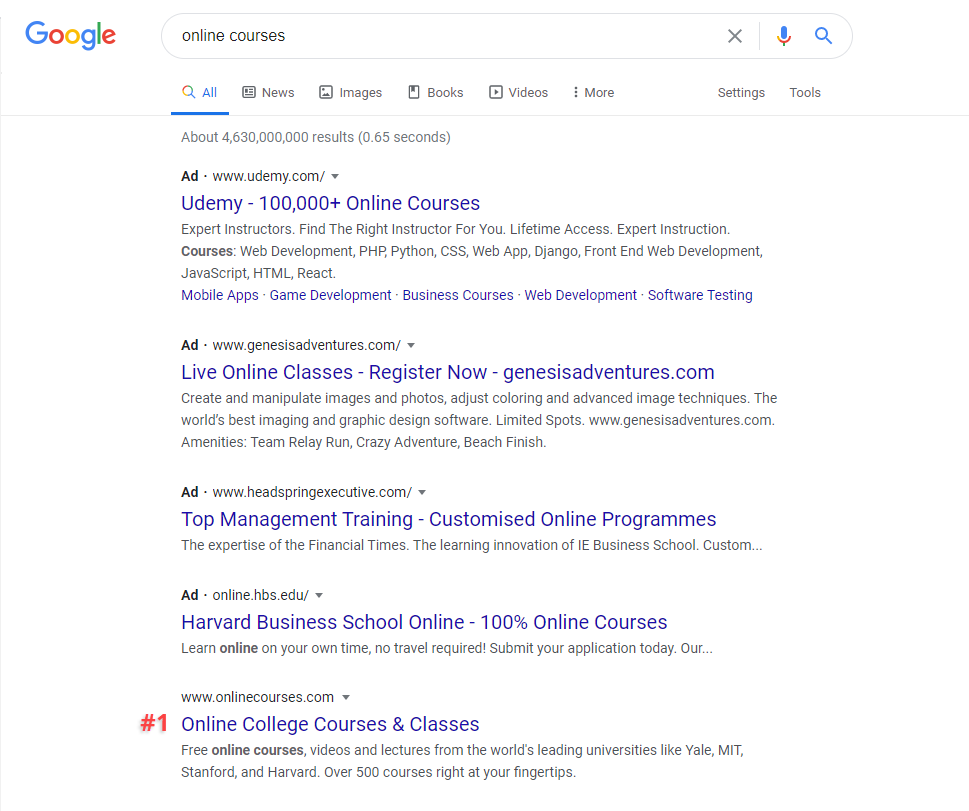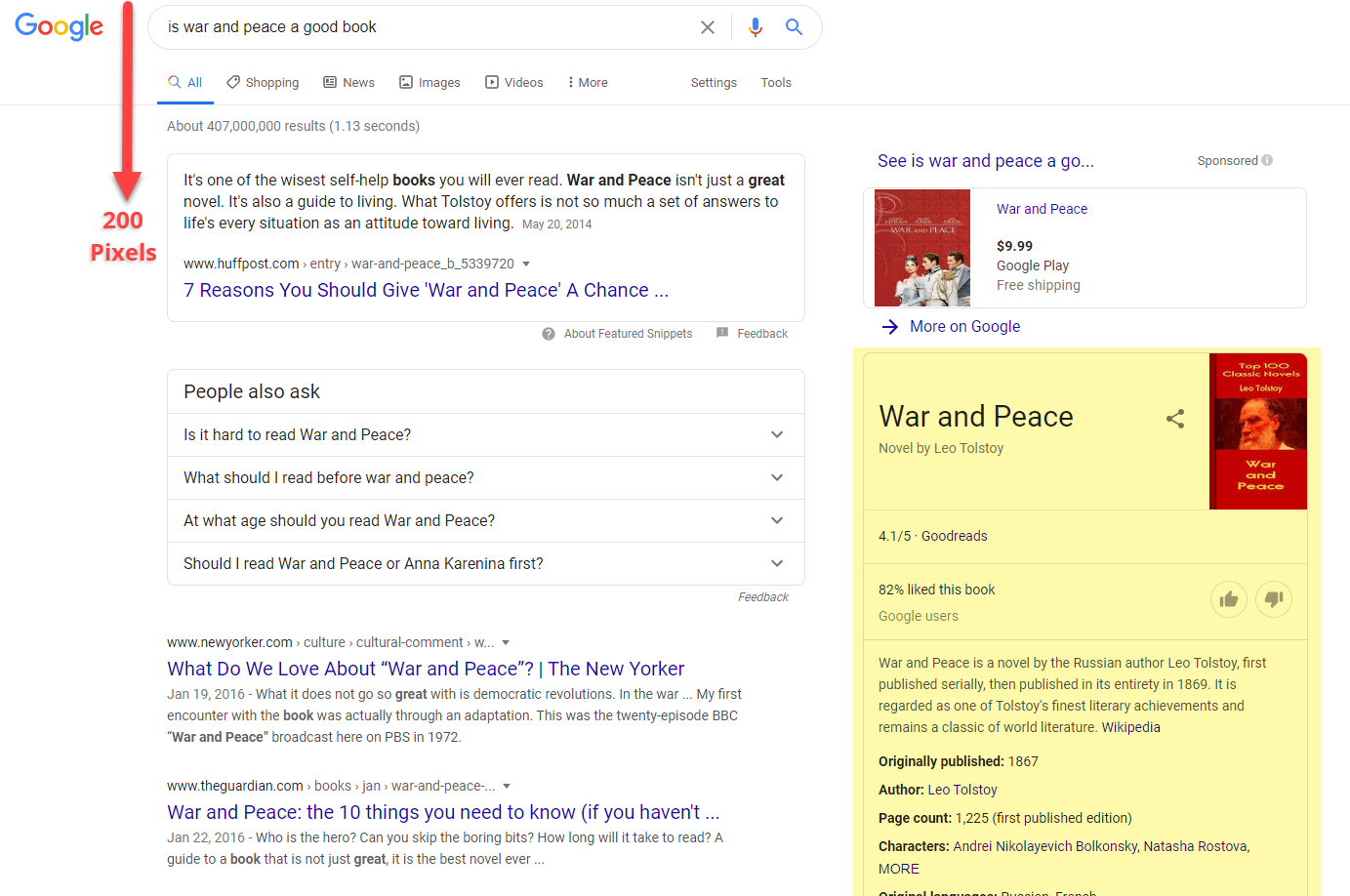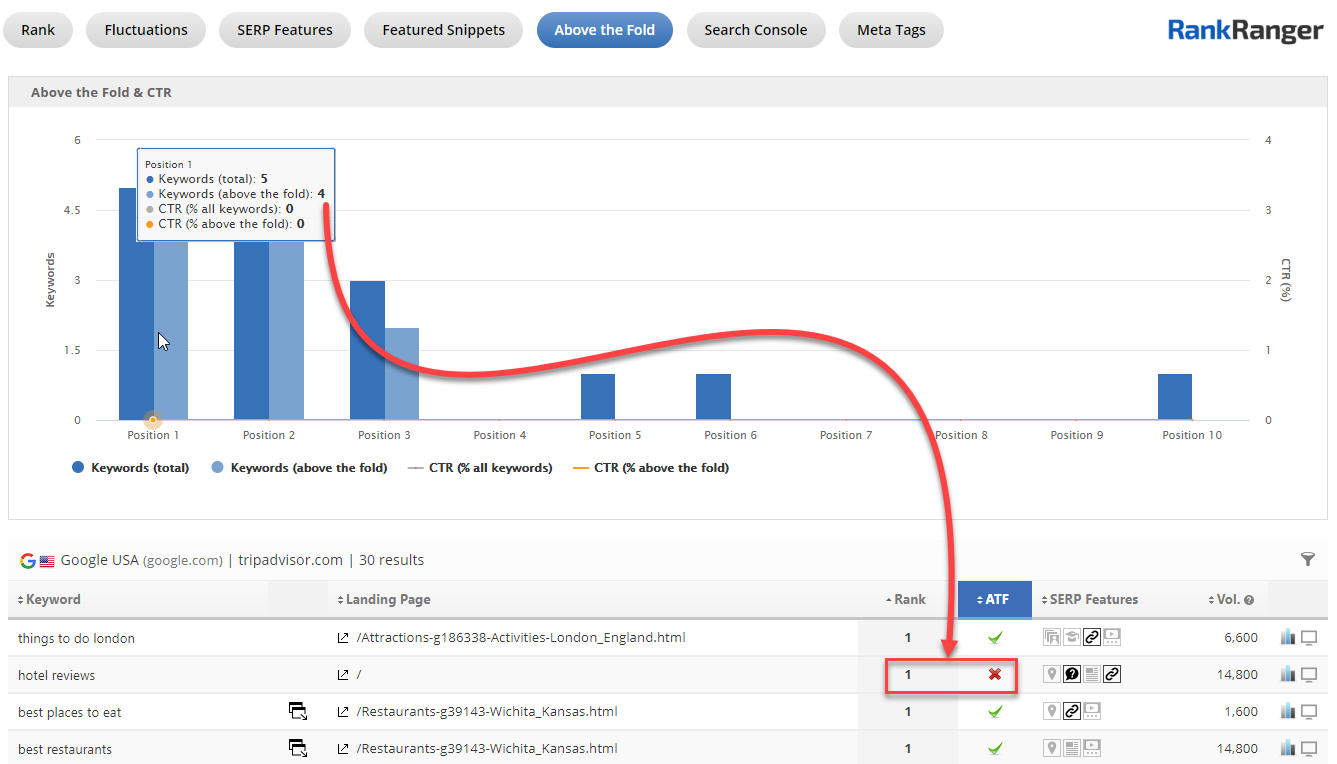Posted by
Shay Harel
I’ve been on a kick for a while now that the way we track rank on the SERP needs to change. In specific, qualifying what a ranking ‘win’ means is more important than ever. With so many SERP features dominating the above the fold space on the SERP ranking #3, #2, or even #1 might not be as powerful as it once was, with emphasis on the word “might.” A lot of what goes into understanding the true potency of your rankings depends on what SERP features Google is showing and where those features are placed on the SERP.
We wondered if there was a way to give you a better sense of what ranking at a given position on a given SERP actually means. After all, ranking #2 on a SERP with an ad at the top is not the same as ranking #2 on a SERP with a Featured Snippet, Video Box, and an ad at the top!
To help you better understand what your rankings really mean, I am pleased to introduce Absolute Visibility – pixel-based rank tracking without the problems of pixel-based rank tracking.
The Problem with Rank Tracking on Today’s SERP

Before I get into the solution, let me rehash the problem here just a bit. We used to think that our visibility on the SERP only was related to how well we ranked in correlation to the search volume for that keyword. The problem is, the SERP got really complicated really quickly.
For starters, Google got better at targeting intent and showing multiple intents on the same SERP. So while you might rank #1 on the SERP, your URL might not be the top result for a given user with a particular intent.
To make the ranking picture all the muddier, Google has gotten pretty energetic with its SERP features. More than ever you’re competing with Google features like the Video Box, the Knowledge Panel, Direct Answers, etc. for the eye of the user. Without fully understanding the SERP feature scenario for the keywords you rank for, it’s hard to really qualify what doing well on the SERP really means.
This is where Absolute Visibility comes in.
What Is Absolute Visibility & Pixel Rank Tracking?
The idea of tracking rank by pixel, as opposed to position per se, is one that’s been floating around the industry for some time now. While tracking rank purely by pixel can be complex, what Absolute Visibility does is tackle those complexities head-on with an easy-to-digest score. Tracking rank by pixel is extremely important because it considers the other elements on the page, i.e., Google’s SERP features. It is entirely possible, and not as infrequent as you might think to rank #1 on the SERP but have a series of ads, a news carousel, and a Video Box showing above your URL. The only way to know that is to either visit the SERP or have a score based on Pixels, which we’re calling Absolute Visibility.
Consider the top result shown on the SERP below:

Imagine a ranking report tracking this keyword. It would show this URL ranking #1 and the owner of that URL would be pretty satisfied. However, there’s a very visual carousel as well as an ad that resides above the first organic result here. In all fairness, ranking #1 here would be the equivalent of ranking #3 on the SERP. #3 is not #1, which is why you need something to qualify position per se, which is clearly where tracking by pixel is very helpful.
![]()
Where tracking by pixel gets muddy is the “fold.” The last result that ranks above the fold on the SERP is not that far removed from the first result that ranks below the fold in terms of pixels. Sure, a straight-up tracking of rank by pixel will show a difference here, but the real impact is qualitative. The difference between being within the user’s initial purview and hidden from sight is not just a few Pixels.
I’ll throw another wrench into rank tracking by pixel… SERP features that appear to the right of the results, i.e., the Knowledge Panel on desktop. A score that considers pixels alone will not help you qualify this instance. You could rank at the top of the SERP, just a few small pixels down the page, and be rendered obsolete by the Knowledge Panel.

In the above, Pixel rank tracking would record this as a huge win for the top URL when in reality the Knowledge Panel may draw more clicks
This is why Absolute Visibility weighs being above or below the fold. It’s why we developed Absolute Visibility to consider when a feature appears to the right of the organic results. It’s also why we weigh the SERP features themselves as part of the score. Not every SERP feature is equal in its impact on grabbing user attention. If all we did was track rank by pixel it would not consider the impact of the SERP features that appear directly below your result, nor would it make much of a distinction between SiteLinks and the very clickable Video Carousel.
Absolute Visibility truly helps you qualify your rankings by taking pixel rank tracking and giving it some nuance. Yes, the score utilizes pixel rank tracking as its foundation but is accented by weights that offset the linear analysis of pixel tracking per se. Simply put, Absolute Visibility is a well-rounded score.
Absolute Visibility is a metric we created to help you qualify what your rankings actually mean. While there is no substitute for looking at the SERP and “seeing what’s there,” it can be hard to spend that time doing so especially if you’re working at scale. While we didn’t create Absolute Visibility to replace an in-person review of the SERP, the metric does help you better qualify the potency of your rankings at a glance.
The result is the ability to start qualifying your rankings at scale.
Let me show you.
How to Better Understand Your Rankings with Absolute Visibility
We calculate Absolute Visibility on a scale of 0-10, with 10 being the epitome of visibility on the SERP. So in theory, if your page ranks #1 on the SERP, is shown as a Featured Snippet, and there are no other features on the page (which means you are also above the fold as well), your Absolute Visibility score would be 10 out of 10.
As the variables here change, i.e., there’s an ad showing above your Featured Snippet, the Absolute Visibility score adjusts accordingly.
Take the example below. For the keyword jeni’s ice cream flavors the site ranks #1 as a Featured Snippet and is above the fold (although, with five other results). At the same time, Google shows a Video Carousel on the SERP that does not contain a URL to this particular site. As a result, the Absolute Visibility awarded is not 10, but 9.53 (which is certainly not bad at all).

A ranking URL’s Absolute Visibility being slightly impacted by a Video Carousel on the SERP.
The example above is fairly typical of what you would expect. That is, you have a well-ranking result receiving a very high Absolute Visibility score. Where the metric comes into focus is in a case where you would think the page’s ranking to be quite potent when in reality it is not.
On face value, if your page is ranking #2 on the SERP, all things being equal, that’s great… until it’s not. In the instance below, Amazon ranks #2 for a very popular keyword, best sellers. As great as that sounds the Absolute Visibility score doesn’t even crack 6, and for good reason, the URL is not above the fold!

No matter the position, ranking below the fold decreases a page’s presence on the SERP, Absolute Visibility takes this into account
To make matters worse for Amazon in this instance, the query produces a Featured Snippet containing a competitor’s URL, a Knowledge Panel, a news carousel, etc. All of these page elements make it harder for a user’s eyes to focus on Amazon’s URL.
You can see the same thing happening with Amazon’s top-ranking keywords. Even at position #1, it is possible to rank below the fold and that certainly impacts your real visibility.
What you would have otherwise thought would be a pretty big win turns out to be a relatively paltry possession for the site!
Advanced Rank Analysis with Absolute Visibility
Relegating an important and novel metric like Absolute Visibility to a “mere” numeric representation on a table is not our style. We wanted to help you both understand the overall trend of your Absolute Visibility while being able to identify which SERP features are giving your URLs the stiffest competition when vying for user attention.
To effectuate this we created a trends graph that correlates your weighted rank and Absolute Visibility against a per day breakdown of the SERP features that appear on the results page along with your URL. The idea is to help you isolate what precisely is limiting your visibility on the SERP & what exactly might be preventing users from moving on from the SERP and to your site.
In other words, is your visibility being negatively impacted by your rankings or SERP features? If the latter, which features? Maybe SERP features are not the issue, but ranking above the fold is?

Decreases in Absolute Visibility can result from SERP feature position & presence as well as the ranking of a URL itself or its above or below the fold status
In the graph above, you can clearly see a correlative trend between the number of URLs from the site that rank above the fold and Absolute Visibility. So even though on June 17th there was a loss of rank, that loss was offset by the increase in the number of URLs now ranking above the fold. This is the weight applied to the score at work. Notice, that the overall SERP feature presence went down on the 17th, thereby allowing the URLs to move above the fold. That’s a ton of rank qualification happening on a single graph.
In the graph below, the inverse is true. The site’s rankings are incredibly static, yet on June 7th the Absolute Visibility plunges. Why? Because there’s an uptick in Local Packs!

An increase in Local Packs across the keyword set pushes the domain’s overall Absolute Visibility down despite the domain’s ranking being consistent
What most likely occurred in the above scenario is that the Local Pack increase pushed the site’s ranking pages below the fold, resulting in the Absolute Visibility dropping off despite rank being stable. In fact, you can see it right there on the graph as along with Absolute Visibility the number of Above the Fold URLs has dropped significantly!
Truth be told, the information presented on this graph can point to all sorts of possibilities. In some cases, you can infer the direct cause while in other instances the data gives you the right place to start an investigation. This is definitely the thinking person’s kind of graph as it can point to a wide array of deep-seated causality.
What I’m trying to say is that this is a real pro-tool that can dig deep into your SERP performance and give you a leg up by pointing you towards the real reason your site may not be performing as you would like. The tool here, as well the Above the Fold data that accompanies it, can help you see the wide range the issues that might impact the real-world visibility of your rankings!

The Above the Fold Rank Tracking Insights report as found within Rank Ranger
At a minimum, the graph gives you a great look at how Google has been utilizing SERP features over time on the SERPs that matter most to you!
Start Understanding Your Rankings

I know I keep saying this, but you really need to understand the larger context around your rankings. I think it’s important for us as an industry to push ourselves to abandon certain preconceived notions we have about the power of ranking on the SERP.
I’m both extremely pleased and extremely proud that we’ve started the process of creating SEO tools that do that. I’m proud that we’re part of the process that helps guide the industry towards being able to align our understanding of rank to how Google is treating the SERP. I don’t think there has been a tool or metric that has meant more to me in terms of what it means for the SEO industry going forward than Absolute Visibility, and that’s saying a lot.
I hope you’ll find Absolute Visibility as helpful and as meaningful as I do.
You can access Absolute Visibility within the Rank Ranger UI as part of our Above the Fold Insights report: Reports>SEO>Rank Insights> Above the Fold

